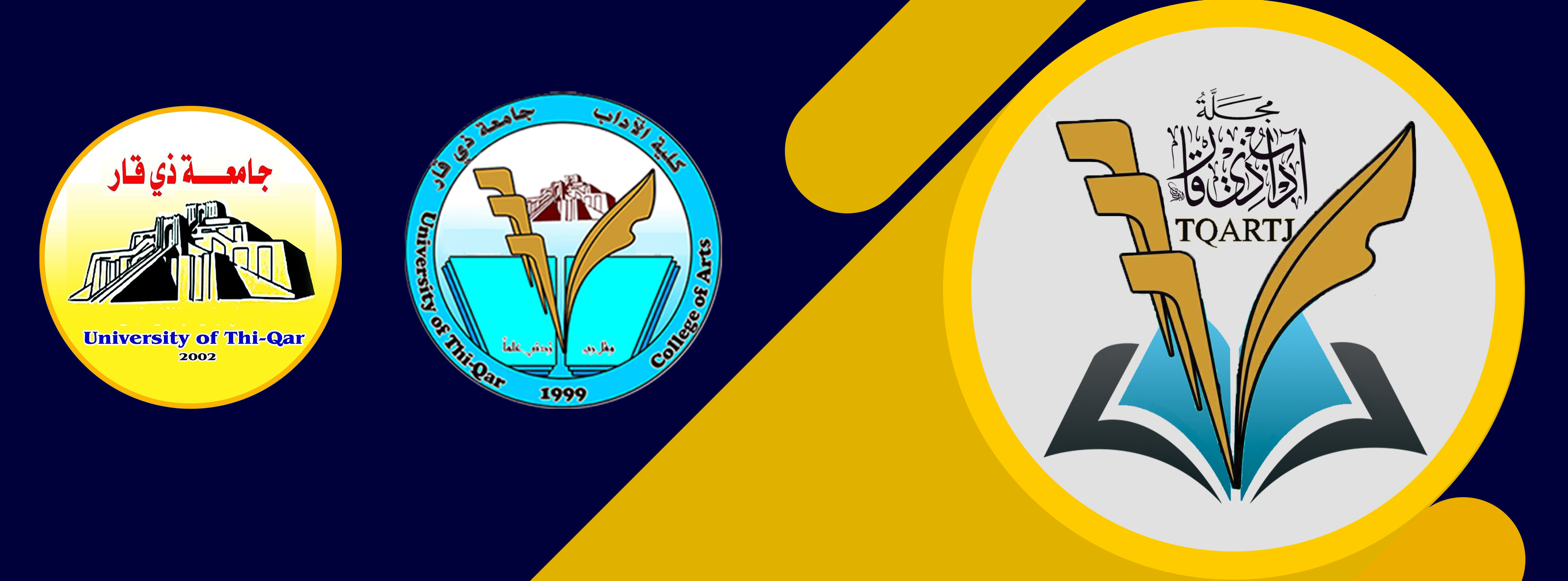The role of pronouns in achieving textual coherence in the words of Allama Majlisi in the book Al-Mukhtaqkez of Objective Interpretation in Bihar Al-Anwar (A descriptive and analytical study)
DOI:
https://doi.org/10.32792/tqartj.v1i44.484Keywords:
textual cohesion, style, descriptive coherence, reference, pronouns.Abstract
The pronouns play an important role in making verbal mechanisms of verbal cohesion in the real linguistic context; because they refer to antecedents or postpositions and this text consists of names or sentences that form a syntactic structure that contributes to the cohesion of meaning in the text; it makes the text have a semantic feature that shows the intention of the text for the listener.
If it is true that the pronouns had an important role in explaining the meaning of the signatory's speech in interpreting verses of the Quran, because his interpretation was rich with compatible and harmonious pronouns with the verses of the Quran that he interpreted and what it includes opinions, meanings and knowledge with verses of the Quran, then his interpretation is a matter of using it as a reference pronoun in accordance with its content and economy for speech, as well as participating in linking descriptive from among reference antecedents (the letter, and alif, and na) and reference postpositions (the pronoun) .
Downloads
References
The Holy Quran
Al-Amini, Mohsen, A’yan al-Shia, edited by Mohsen al-Amini, Dar al-Ta’aruf for Publications, Beirut, 5 (1435 AH) (2014 AD).
Ibn Manzur, Lisan al-Arab, vol. 7, Dar Sader, (1998 AD).
Al-Majlisi, Muhammad Baqir, Al-Muntakhab min al-Tafsir al-Mawdu’i fi Bihar al-Anwar, supervised and introduced by Ja’far Subhani, prepared and verified by the Scientific Committee for Verification in the Imam al-Sadiq Foundation (peace be upon him) The publisher is the Imam al-Sadiq Foundation (peace be upon him) / Qom al-Muqaddasah, 1, (1436 AH).
Ali, Muhammad Muhammad Yunus, Al-Ihala wa Aqtaraha fi Dalalat al-Nass wa Tamassukhih, University of Sharjah, Journal of Linguistic Studies, vol. 6, no. 1, 2004 AD.
Al-Andalusi, Ibn Hayyan, Irtishaf al-Darb min Lisan al-Arab, (d. 754 AH), correction, Rajab Othman Muhammad, review, Ramadan Abdel Tawab, Al-Khanji Library, Cairo, 1, (1998 AD).
Ismail, Azeddine, Dian Macdonald Introduction to Discourse Theories, published by the Academic Library, Sh. M (2001 AD). Cairo
Abdel Latif, Muhammad Hamasah, Building the Arabic Sentence, Dar Ghareeb Cairo, (2003).
De Bo Grand, Robert, The Text, Discourse and Procedure, translated by Tamam Hassan, World of Books / Cairo, 1 (1418 AH), (1998 AD)
Al-Azhari, Tahdhib al-Lugha, verification, Muhammad Awad Mar’ab, publisher Dar Ihya al-Turath al-Arabi-Beirut, 1 (1000 AD).
Al-Tabatabai, Muhammad Hussein, Al-Mizan fi Tafsir al-Quran, publisher Dar al-Andalus Publications (2010 AD)
Muhammad Khatabi, Linguistics of the Text, an Introduction to the Coherence of Discourse, 1/ (1999 AD), publisher The Arab Cultural Center.
Al-Sabehi, Muhammad al-Akhdar, Introduction to the Science of the Text / Dar al-Arabiya for Sciences Publishers, Dar al-Ikhtilaf Publications.
Al-Zanad, Al-Azhar, The Fabric of the Text, a Research on What Makes the Utterance a Text, (1993 AD), The Arab Cultural Center Beirut.
Al-Aqbaoui, Ismail Muhammad, The Science of the Language of the Text, a Theoretical Introduction, United Arab Emirates, Dar al-Haram for Publishing and Distribution, 1, (2016 AD)
Al-Adwani, Khaled Hassan, Studies of the Arabic Sentence and Linguistics of the Text, Son Jag University, Ankara.
Afifi, Ahmed, Towards the Text, (2001 AD), Zahraa Al-Shorouk Library, Cairo.
Maslouh, Saad Abdel Aziz, In Arabic Rhetoric and Linguistic Stylistics, New Horizons Kuwaiti Scientific Publishing Council, (2004 AD)
Fajal, Anas bin Mahmoud, Al-Ihala and Its Effect on the Coherence of the Text in the Quranic Stories, Al-Ahsa, 1 (1434 AH), (2012 AD), Al-Ahsa Literary Club.
Sibawayh, Abu Bishr Amr bin Uthman bin Qanbar, The Book, verification and explanation, Abdel Salam Muhammad Haroun, publisher, Al-Khanji Library in Cairo.
Laghwini Bougraff, The Purposes of Reference in the Quranic Text, an Analytical Study of Some Quranic Verses, supervised by Muhammad Milyani, (2015 AD), Faculty of Arts and Arts, 1427 AH, 2006 AD.
Al-Istirabadi, Radi al-Din Muhammad bin al-Hasan, Explanation of Ibn al-Hajib’s Kafiya, (d. 686 AH), introduction and explanation, Emil Badi Yaqoub, publications of Muhammad Ali Baydoun, Dar al-Kutub al-Ilmiyya, Beirut Lebanon, 1, (1419 AH), (1998 AD).
Al-Shawish, Muhammad, The Origins of Discourse Analysis in the Arabic Grammatical Theory, University of Manouba, The Arab Foundation for Distribution, 1, (1421 AH), (2001 AD).
Downloads
Published
How to Cite
Issue
Section
License
Copyright (c) 2023 Mushtaq Kazem Juma , Dr. Somayeh Hassanalian, Prof Dr. Imad Jabbar Kazem Daoud

This work is licensed under a Creative Commons Attribution 4.0 International License.
The journal applies the license of CC BY (a Creative Commons Attribution International license). This license allows authors to keep ownership of the copyright of their papers. But this license permits any user to download, print out, extract, reuse, archive, and distribute the article, so long as appropriate credit is given to the authors and the source of the work. The license ensures that the article will be available as widely as possible and that the article can be included in any scientific archive.












